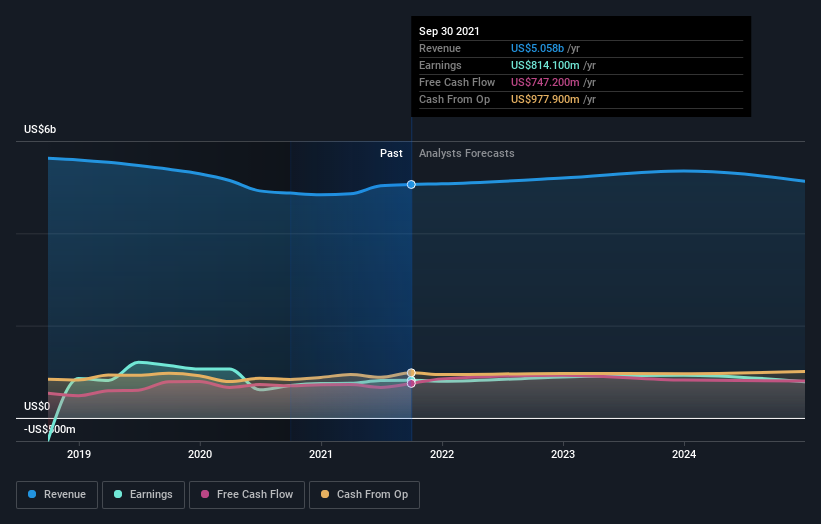What Does The Western Union Company's (NYSE:WU) Share Price Indicate?
The Western Union Company (NYSE:WU), might not be a large cap stock, but it saw a double-digit share price rise of over 10% in the past couple of months on the NYSE. As a mid-cap stock with high coverage by analysts, you could assume any recent changes in the company’s outlook is already priced into the stock. However, could the stock still be trading at a relatively cheap price? Let’s examine Western Union’s valuation and outlook in more detail to determine if there’s still a bargain opportunity.
See our latest analysis for Western Union
What is Western Union worth?
Good news, investors! Western Union is still a bargain right now according to my price multiple model, which compares the company's price-to-earnings ratio to the industry average. In this instance, I’ve used the price-to-earnings (PE) ratio given that there is not enough information to reliably forecast the stock’s cash flows. I find that Western Union’s ratio of 9.27x is below its peer average of 32.72x, which indicates the stock is trading at a lower price compared to the IT industry. What’s more interesting is that, Western Union’s share price is quite stable, which could mean two things: firstly, it may take the share price a while to move closer to its industry peers, and secondly, there may be less chances to buy low in the future once it reaches that value. This is because the stock is less volatile than the wider market given its low beta.
Can we expect growth from Western Union?
Investors looking for growth in their portfolio may want to consider the prospects of a company before buying its shares. Although value investors would argue that it’s the intrinsic value relative to the price that matter the most, a more compelling investment thesis would be high growth potential at a cheap price. However, with a relatively muted profit growth of 0.8% expected over the next couple of years, growth doesn’t seem like a key driver for a buy decision for Western Union, at least in the short term.
What this means for you:
Are you a shareholder? Even though growth is relatively muted, since WU is currently trading below the industry PE ratio, it may be a great time to increase your holdings in the stock. However, there are also other factors such as financial health to consider, which could explain the current price multiple.
Are you a potential investor? If you’ve been keeping an eye on WU for a while, now might be the time to make a leap. Its future profit outlook isn’t fully reflected in the current share price yet, which means it’s not too late to buy WU. But before you make any investment decisions, consider other factors such as the strength of its balance sheet, in order to make a well-informed assessment.
In light of this, if you'd like to do more analysis on the company, it's vital to be informed of the risks involved. You'd be interested to know, that we found 1 warning sign for Western Union and you'll want to know about it.
If you are no longer interested in Western Union, you can use our free platform to see our list of over 50 other stocks with a high growth potential.
Have feedback on this article? Concerned about the content? Get in touch with us directly. Alternatively, email editorial-team (at) simplywallst.com.
This article by Simply Wall St is general in nature. We provide commentary based on historical data and analyst forecasts only using an unbiased methodology and our articles are not intended to be financial advice. It does not constitute a recommendation to buy or sell any stock, and does not take account of your objectives, or your financial situation. We aim to bring you long-term focused analysis driven by fundamental data. Note that our analysis may not factor in the latest price-sensitive company announcements or qualitative material. Simply Wall St has no position in any stocks mentioned.

 Yahoo Finance
Yahoo Finance 
